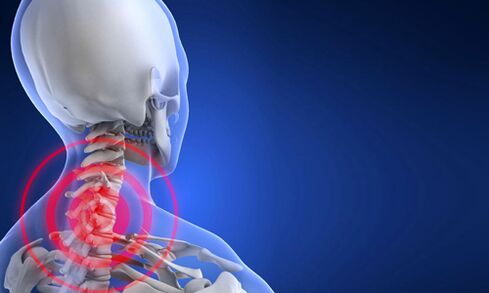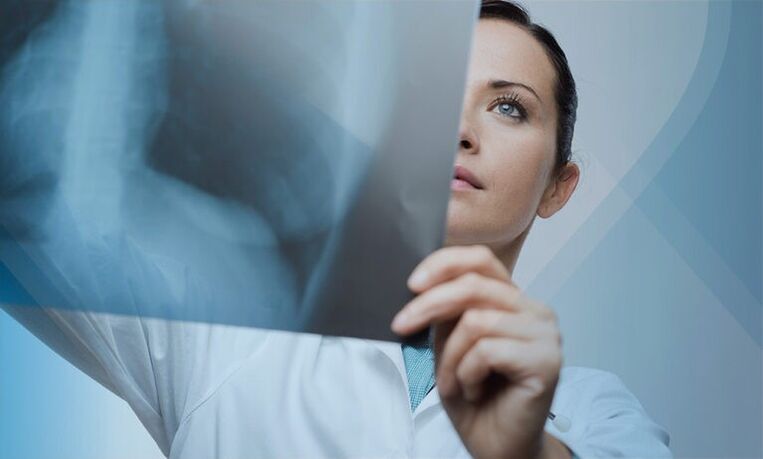Currently, not only people of retirement age, but also young people over 25 are at risk. Osteochondrosis affects different areas and departments: lower back, neck, chest.

Causes and stages of cervical osteochondrosis
Osteochondrosis occurs as a result of the following factors:
- excessive physical load on the spine;
- bending, damage to the vertebral discs;
- nervous tension, stressful situations;
- insufficient intake of essential vitamins, minerals and trace elements that slow down the metabolic process and lead to osteochondrosis;
- sedentary lifestyle;
- having straight legs;
- sleep on a soft pillow or mattress;
- postures that are often disturbing while sitting;
- carry the bag on one side;
- circulatory disorders and muscle spasms.

All causes, together or individually, create favorable conditions for the development of osteochondrosis. Women are more prone to this disease, and wearing high-heeled shoes and a bag on one shoulder aggravates the situation, pregnancy is no exception. Failure to follow the rules recommended by the attending physician can result in serious damage to the mother's health.
In the process of tension in the cervical region, cracks form in the cartilage, disc slippage and compression of the nerves and spinal cord are possible. There are blood vessels throughout the cervical region that supply the brain with the necessary substances, the compression of which causes serious health problems. If you do not treat osteochondrosis of the cervical spine at home, the person's condition worsens, the distance between the vertebrae narrows, and then the bone tissue grows, causing severe pain and discomfort. There are several stages of cervical osteochondrosis:
- The first stage is characterized by the appearance of cracks in the fibrous ring, probably due to the lateral displacement of the nucleus. Symptoms may include fever and sharp pains, sudden muscle spasms, dilated pupils, and numbness of the tongue - all indications of an early stage of the nerve disorder. Specialists often diagnose Wright and Naffziger syndromes in addition, the characteristic features of which are numbness of the hand, tingling, compression of the nerve endings in the collar region when removed. Spontaneous and frequent physical exertion, a characteristic crisis in the affected areas, unexplained fatigue, neck pain that occurs during tinnitus.
- In the second stage, the space between the vertebrae narrows further, which leads to drying of the fibrous ring, and the rupture of the capsule is accompanied by an inflammatory process. In the absence of proper treatment, osteophytes form - the growth of bone tissue.
- The third stage is characterized by complete rupture of cartilage tissue, a prolapse of the nucleus, which can lead to the formation of a herniated intervertebral disc. Symptoms that help to recognize the disease in stage 3 are often sharp pain in the cervical region, frequent numbness of the limbs, a person can not control the arm or leg, it is accompanied by dizziness and headache, fainting.
Diagnosis and treatment of the disease

If you suspect cervical osteochondrosis, you cannot treat yourself. The symptoms of some diseases are very similar, and self-medication can lead to worsening of the condition and wheelchair.
It is always easier to eradicate in the early stages of the disease, when it does not gain strength and causes little damage to internal organs.
The loss of valuable time is threatened by a long course of treatment, including medication, physiotherapy exercises and adherence to a daily regimen.
If the symptoms of the disease are detected, it is necessary to contact a specialist - a neurologist, who can diagnose, determine the damage to the nerve endings and prescribe additional X-rays, vascular ultrasound and tomography. Diagnosis is based on MRI and radiography.
In the early stages of the disease, the patient can treat cervical osteochondrosis at home, visiting a specialist at a certain time and fully following his advice and prescriptions.
Drug treatment consists of taking certain medications that, depending on the stage of the disease and the general condition of the body, should be prescribed by a doctor who prescribes the dose:
- NSAIDs, admission lasts up to 2 weeks;
- sedatives prevent complete depletion of the nervous system, including mother tincture, valerian;
- When edema appears, the doctor prescribes diuretics that reduce the swelling of the inflamed area;
- Thanks to the intake of B vitamins, metabolic processes in the affected tissues of the nervous system are normalized, neuromuscular permeability is improved;
- relaxes muscles prone to muscle relaxant spasms;
- taking chondroprotective drugs to improve the function of intervertebral discs and cartilage tissues;
- In addition, the specialist prescribes the use of ointments and creams, which soothe pain, warm the tissue and help alleviate the human condition.
If the patient feels unwell, bed rest is mandatory. Due to the correct position of the body, the vertebral discs relax and pain is reduced. Bed rest should not exceed 2 days, after which the patient should be sure to move.
Tips to alleviate the human condition
Doctors often hear the question of how to treat cervical osteochondrosis at home. If the patient is in the acute stage of the disease, it is recommended to do light breathing exercises and several exercises to relieve spasms.
With the improvement of well-being, it is allowed to exercise in a sitting or standing position under the supervision of an experienced specialist. Therapeutic exercises at home are allowed when a person learns all the necessary rules and strictly follows them.
It consists of several smooth curves and bends of the head, and then the load gradually increases. If a muscle spasm occurs suddenly, it is necessary to give a light massage that does not cause pain and discomfort.
For preventive purposes, experts in good health recommend visiting an experienced masseur twice a year. It is able not only to warm up the muscles properly and quickly, but also to qualitatively remove small salt deposits, develop joints and vertebrae.
After consulting a doctor, it is allowed to use a Glisson loop consisting of several straps hanging on the hook. They allow you to support your head and relieve stress on your neck. Diet plays an important role in the treatment of cervical osteochondrosis. Experts recommend excluding from daily consumption products that can increase muscle tone and cause spasms - coffee, tea, alcoholic and non-alcoholic beverages, smoked products and spices. A person with osteochondrosis will benefit from:

- foods high in fiber, phytochemicals and antioxidants, they will not only improve the overall condition of the patient, but also have a positive effect on the vertebrae and cartilage tissues: these are fresh fruits and vegetables, legumes in any form, cereals;
- protein products - milk and its derivatives, any type of nuts, eggs, diet and lean meat and fish, beef;
- products containing unsaturated fatty acids - oily species of sea fish, flax seeds, lightly fried and dried;
- Products with high levels of calcium - sour milk products, mineral water.
If a person is not in the acute stage, it is still better not to take risks and not to spasm the affected tissues again because they ate the wrong food. You need to drink plenty of still water, balance your diet, and do therapeutic exercises on a daily basis, which not only relieves tension from the affected areas of the body, but also has a strengthening effect on the patient's body. .
At work, you should take short breaks, quickly massage yourself and control your posture.
Danger of self-medication

You do not need to self-medicate to avoid putting yourself at great risk. Only an experienced specialist can understand the disease, study the stage of osteochondrosis, take measures to eliminate the disease and prescribe the right and qualified treatment. Some diseases are very insidious and can be easily hidden like others.
Examination using X-ray, ultrasound, magnetic resonance imaging will help to examine the structure of the vertebral discs, identify problems and find the right option to eliminate them and alleviate the patient's condition. If a person treats himself, he can miss the initial stage of the disease and further destroy his body. Uncontrolled intake of drugs will damage not only the gastrointestinal tract, but also the liver and kidneys, which will remove toxins and purify the blood in an intensified mode.
After consulting a doctor at home, you can use herbs and herbal decoctions that will increase the effect of ointments and drugs:
- Celery: 1 teaspoon crushed root of the plant is poured into 1 liter of warm water and infused for 8 hours, after filtering 1 tsp. q. After meals 3 times a day. Celery seeds: 1 tbsp. l. Pour 0. 5 liters of boiling water, insist 2 hours and take 1 tbsp. l. 3 times a day before meals.
- Fresh horseradish or cabbage leaves are applied to pre-shrunk, painful spots, covered with a warm scarf or shawl and replaced if necessary.
Expert advice for the prevention of osteochondrosis
The most common mistake many patients make is their persistent belief that the disease will go away on its own.
Doctors say that such an attitude to one's own health has a negative impact on the condition of the person and aggravates the course of osteochondrosis of the neck.
The course of treatment includes not only the elimination of pain, discomfort and some symptoms, but also the restoration of damaged spinal and cervical discs, the elimination of constriction of blood vessels to the brain and the protection of human well-being.
The recovery process is quite long and requires a lot of patience, effort and help from relatives and friends, but the result will allow you to feel free, not addicted to drugs and enjoy life.

























